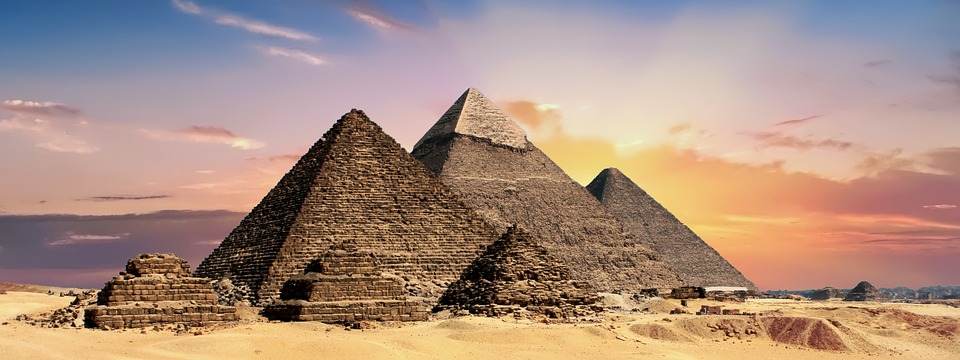Introduction
The Egyptian religion can be seen as a system of thought, a means of structuring the world, and of maintaining it so as to make it possible for Creation to persist. It reflected both life on earth among the humans and life on a higher plane among the gods.
The religion of the ancient Egyptians did not only include their natural surroundings and the state of affairs in society, but it also adhered deeply, almost mystically, to the inner world of the human mind. There existed a unity and a correspondence between these spheres. Everything had its place and function within Creation, and Man was a part of Creation, not its´ center.
Man’s perception of the world around him as expressed in this system of thought, based itself on a symbolistic approach. Symbols point to something beyond a literal understanding and travel between different levels of awareness. The intricate feedback between these levels made an understanding possible beyond the everyday humdrum world of petty realities; these realities became transformed into deeds of gods, and when heeded they transferred humans into a Presence which can only be described as Divine.
This Divinity was at the same time the Creator God, the King and every one of the gods which were worshipped daily, whether hidden inside the temples or in the household shrines. For the ancient Egyptian there was in effect no difference between these aspects of the Divine. Neither did he experience any difference between that which was “religious” and that which was not. That word did not exist. For him, the Divine was present every day and everywhere, on all levels of existence. They simply addressed that aspect of the Divine that was most suited for the matter in question.
The King
The mediator between humans and gods was the king. The crowning of a new king transformed him into a living god;
“What is the king of Upper Egypt?
what is the king of Lower Egypt?
It is a god by whose guidance you live
the Father and the Mother of all humans
Alone by himself
The one who is unique
The most important task for the king was to serve the gods and by that making it possible to maintain order and structure in society. He is seen as the son of several gods, not just one; Papyrus Harris mentions Ramesses III as the son of Amon, Atum, Ptah, Shu, Thoth, Osiris, Wepwawet, Horus and others. He becomes in fact their incarnation on earth. By observing and obeying the will of the gods he upholds Ma´at, the principle of order, justice and harmony, which is necessary for existence to continue. Here the daily Temple Cult plays an important part.
One important distinction should be made; it is the office of the king which is sacred, the office is eternal but the person holding it changes through time.
Maat
Maat was the first idea that was separated from the primeval nonexistence when the world was created. By the idea of Maat the basic laws for creation and structuring of the universe was formed.
“Maat is eternal
and has not changed since
the time when she came into being”
The concept of Maat is the focal point in the philosophy of the ancient Egyptians. It pervades thinking on all levels of existence: the cosmological level, the ideology of kingship, the social level and the individual level. It is too vast a topic to be more than touched upon briefly here but the concept of Maat is intimately connected to the oldest of the creation myths; Atum at Heliopolis.
When Atum had given life to Shu and Tefnut, by his androgynous powers, the Coffin Texts state him saying:
“Tefnut is my living daughter
and she shall be together with her brother Shu;
his name is Life and
her name is Maat.”
Without Life and Maat there is no possibility of creation; movement, dynamics and differentiation must be guided by an ordering, structuring, regulating principle. Thus Maat is an integrated part of the Creator god himself.
The Eternal Return
Out of Creation the sun, Ra, is born, to travel from east to west, measuring the time and growing older for every passing hour of the day, until he dies and disappears below the horizon. The ordering and structuring Maat is thus at work, ensuring that things are balanced, and that there will be a Rebirth the next morning.
Therefore Maat travels with Ra in the dayboat at day and in the nightboat during the night, keeping the course and stopping the destructive forces from engulfing the boat.
Behind all this was the perception of existence as eternal and circular. What had happened at the first moment of Creation, Z ep Tepy (“First Time”) would be repeated over and over again. From Predynastic times the Egyptians were a farming people, they knew very well that seeds planted in the ground returned as harvest the following year, just like the sun rose every morning. But when destructive forces like draught and famine threatened their existence, the gods were believed to have left them. The gods guaranteed existence to the ancients, without them there would be no life, no order or prosperity, only chaos and disorder. Therefore it was vital and necessary to keep the gods satisfied and wanting to stay in Egypt, and this was an everyday occupation that had to be maintained. On the social level this was taken care of in the temples, and on the individual level one turned to the statuettes of gods in the shrines that was found in every Egyptian home.
Article by Mirjam
Brought to you by Akhet
keions@telia.com

